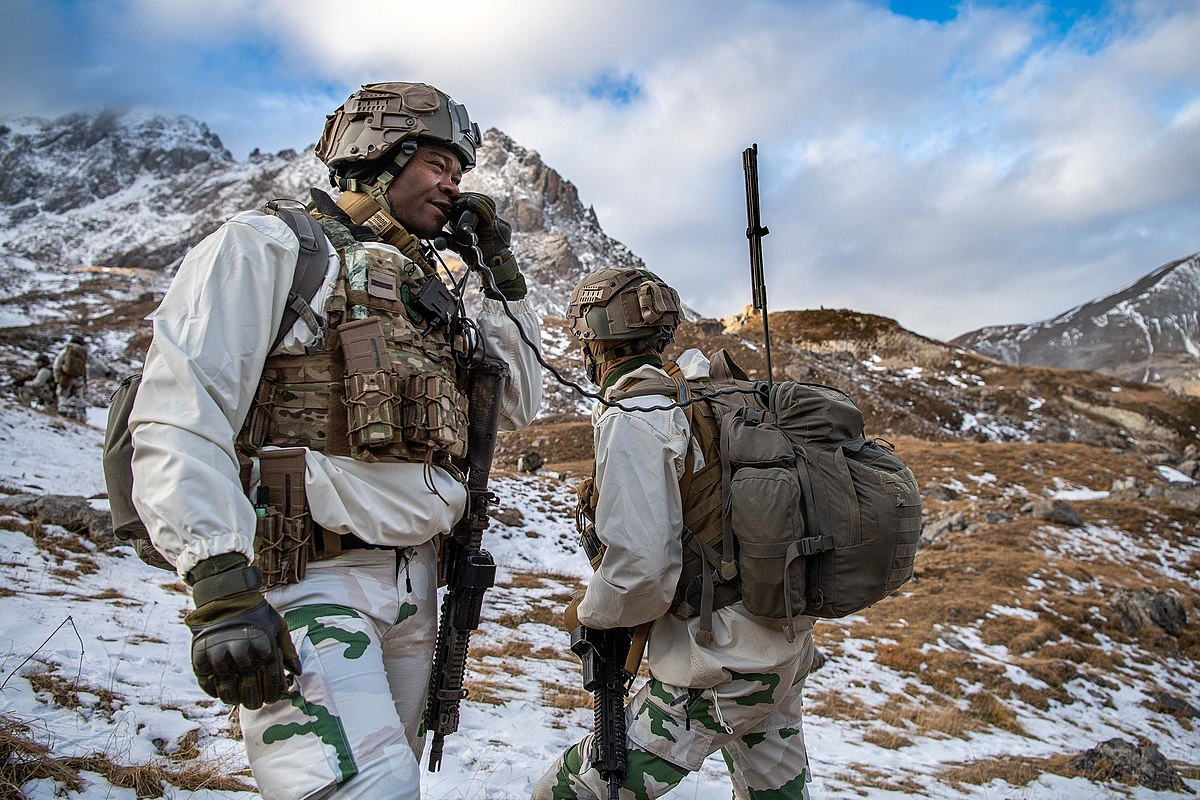From simple steel constructs of the twentieth century, the combat helmet has seen a comprehensive evolution in design, materials, and manufacturing on its journey to reach the advanced systems protecting soldiers today.
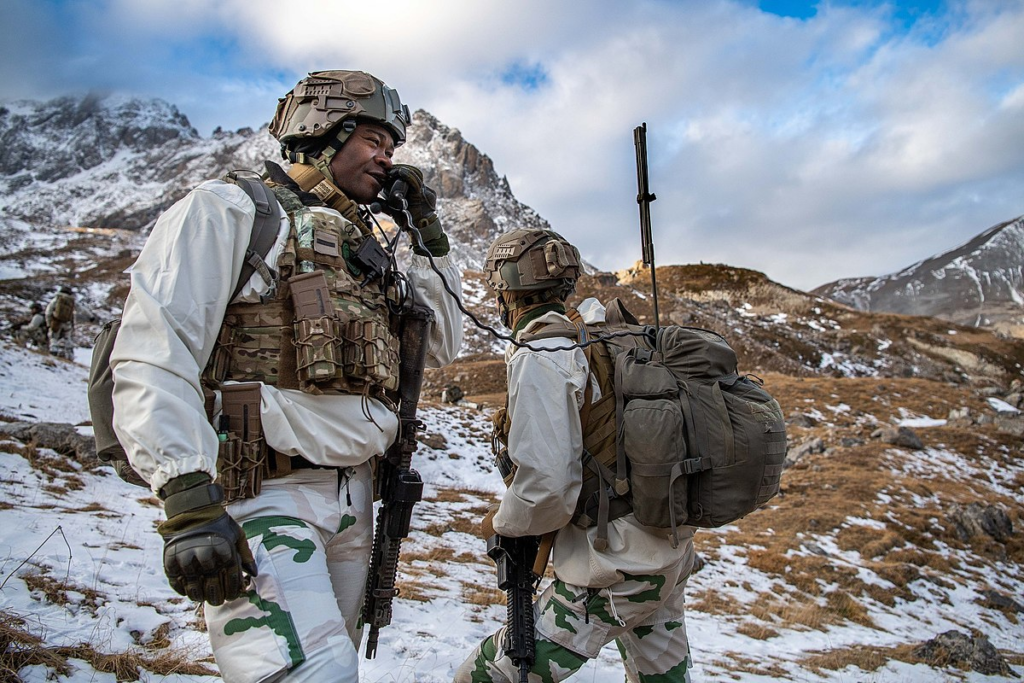
Protection = survivability
The combat helmet today relies on the use of advanced materials, including aramids such as Kevlar, as well as ultra-high molecular weight polyethylene (UHMWPE) composites. They are processed and engineered using advanced manufacturing techniques to produce some of the most effective combat headgear ever developed. UHMWPE is predominantly (with some exceptions) today’s preferred material of use, due to its extremely long molecular chains which serve to transfer impact loads more effectively through the material than other composites. As a result of using such materials, levels of ballistic protection in modern helmets meet some of the most stringent US National Institute of Justice (NIJ) standards, against which most Western ballistic protective equipment – helmets, body armour – are measured. Together with a full understanding of the biomechanics involved in impact-induced head injuries encountered in battle, manufacturers have been able to select the most appropriate advanced composite materials and ballistic fabrics, and process them in ways that optimise their energy absorption and impact resistance material characteristics, thereby optimising levels of protection and wearer survivability.

Headgear evolution in action
To illustrate the kinds of advanced-end product entering service and incorporating the latest understanding of materials and manufacturing techniques, it is worth looking at a few examples of new helmet systems. In the US, with many years of outstanding performance from its previous helmet variants, including the Integrated Head Protection System (IHPS), the Advanced Combat Helmet and the Enhanced Combat Helmet, the US Army has been introducing its new, Next-Generation Integrated Head Protection System, (NG-IHPS), from makers Gentex Corporation and Avon Protection. While it continues to be made of UHMWPE composites, just like its predecessors, its composite construct has been engineered to offer improved protection against projectiles and shrapnel, despite also being some 40% lighter than previous helmets. As a ‘system’, the NG-IHPS comprises retention and suspension elements, a helmet cover, and frontal bracket with a three-bolt night vision goggle (NVG) baseplate, (as opposed to the single-bolt baseplate of predecessor IHPS). Its overall design also allows the integration of communications equipment, hearing protection, and heads-up displays. Importantly, structural integrity of the helmet shell has been maintained in manufacturing by not drilling to affix the chinstrap retention system, which is boltless. Integration of a mandible protector has also been factored into the new helmet system, over 190,000 of which are expected to be delivered by the end of 2028.
In France, a juggling act seems to have been going on between the use of aramid composites and UHMWPE composites for the latest helmet design, with the new F3 ballistic helmet, (part of France’s Félin future soldier systems), being made with aramid-based fibre materials, while previous helmets had already been made of UHMWPE; this came as a surprise to some in military circles, who saw the use of aramid for the F3 as a backward step, the polyethylene composites already viewed across industry as the more advanced material with better ballistic-protection capabilities. Indeed, UHMWPE was employed in the earlier Spectra F2 helmet, which, while not proof against full metal jacket (FMJ) high-velocity rifle rounds, as a fragmentation-resistant helmet its performance has been highly effective, as well as its ability to protect against such other NIJ standard threats as a 9 mm FMJ bullet, with an impact velocity of 426 m/s. Nevertheless, the F3 is now standard issue, and its Kevlar composite structure also, reassuringly, provides similar levels of ballistic protection against shrapnel and 9 mm projectiles as the F2; its exterior design, however, differs considerably from previous helmets, with a significant increase in the payload capacity through new side attachments and rails for attaching tactical equipment, devices and sensors, such as NVGs. Whatever the F3’s longevity, it is understood from reports that UHMWPE is being considered for future designs beyond the F3.
While other modern helmet systems have entered the market, space preludes their mention here, except for a brief look at the family of 4th-generation Hjelm systems introduced in late 2018 by Norway’s NFM Group. Its two latest family members are the Hjelm HC 120MT/multi-threat, and Hjelm HC 160F/fragmentation, helmet systems, introduced in late 2023. Some of the technological and manufacturing innovations in these and other Hjelm systems include the company’s Frec-2 pressing technology, which bolsters the structural integrity of the shell while maintaining a lightweight profile, and NFM’s use of Koroyd’s impact-management technology, which uses welded tubes on the inside surface of the shell, that crumple instantly and consistently when impacted. This ensures that maximum forces are absorbed in a controlled manner by the collapsing tube matrix, thereby allowing only a minimal amount of energy to be transferred to the wearer’s head.
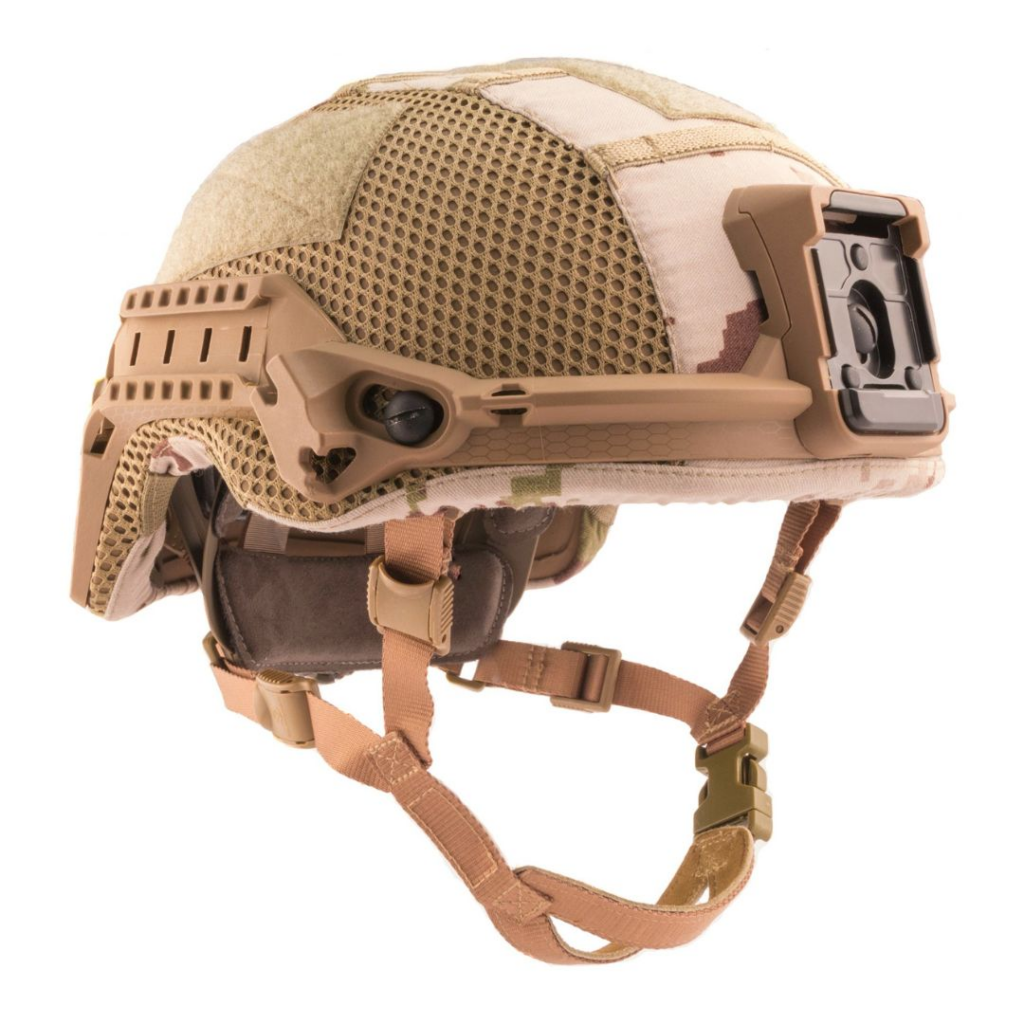
Thoughts from industry
For some qualified insights into latest helmet manufacturing and design developments, ESD turned to Galvion, a supplier of helmets to several NATO members, as well as having provided helmets in support of Ukraine and recently in the news with a mid-February 2025 order from a Middle Eastern customer for 35,000 units of Viper and PDxT variants of its Baltskin helmet system.
Senior vice president of the company’s tactical head solutions, Richard Coomber, reiterated how helmet solutions have moved from the purely passive products of the past, to becoming platforms supporting capabilities such as comms, NVGs, and other sensors. Looking back a few decades, he said that changes started with a transition from the use of aramids to the use of UHMWPE as the main ballistic material for the helmet shell, which has increased protection and reduced weight; this has been followed by the integration of visors and maxillofacial protection and now, increasing levels of ‘smarts’ such as power, data and computation systems’ integration. Coomber noted, “Users and programmes will move through this spectrum of advances at different speeds, depending on their overall mission sets, threats, and budgets, so it will certainly be a faster transition for some than others. Our philosophy is to have options that have an ‘upgrade’ path, with solutions available to support all our customer groups, regardless of how fast or slow they want to adopt technology.”
Construction considerations
Coomber added that at their most basic, helmet shells are constructed of layers of materials, that are compressed into the helmet shape, with the general shell shape designed to facilitate comfort, impact and ballistic protection, but with various cuts, or styles, such as high, mid, or full-cut, available and offering different degrees of head coverage, wearer situational awareness and weight. Traditionally, helmets have also adopted a bolted design, using five bolts to attach accessories, various rails, such as Picatinny rails, mounts and fixtures, to the helmet to facilitate capability integration; these bolts pass through a drilled or lasered hole and are ballistic in design. Alternatively, a ‘boltless’ design can be used, where a series of anchors are bonded to the inside and outside of the shell, removing the need for bolts and maintaining the helmet’s ballistic integrity in areas where bolts would otherwise be present.

However, at the same time it is a mistake, according to Coomber, to assume that the most advanced helmets can protect against the most dangerous of threats. Whilst it is possible for some types of helmets using the most advanced materials and processing techniques to stop rifle rounds, though likely with higher cost and weight considerations involved, a better use of funds by a potential user might be to consider adopting a helmet that incorporates NVGs and communications into a more lightweight construct, making the wearer more agile and with quicker reaction times. However, if protection is still the customer’s key focus, some composite helmets that meet NIJ IIIA levels of ballistic protection can stop handgun ammunition, such as 9 mm FMJ at 426m/s, but will not stop high-velocity rifle rounds. That said, there are some excellent materials and solutions, which Coomber said will stop some rifle rounds, though not all. It is worth noting that when balancing risks and rewards, with rails, accessories and sensors all taking up helmet real estate, the weight of peripherals such as NVGs and cameras becomes a major factor adding load to the head system and placing stress on the wearer’s neck, shoulders, and spine. Whereas some helmet systems have previously, (and some still do), use weights at the back to counterbalance devices such as NVGs on the helmet’s front, Coomber insisted this is inefficient. “Centre of gravity, overcoming moments of inertia, and stability, are all factors that are evaluated in good helmet design. And while the simplest way to counterbalance an NVG on the front of the helmet is to use a counterweight on the back, it also happens to be the most wasteful approach when you’re talking about the limited and valuable real estate on a head system. Far better to replace that counterweight with a battery, sensor or other on-head capability, that adds an operational benefit over just its weight.”

Importance of user feedback
Helmet design today requires consideration beyond just protection from threats and while a soldier’s helmet should ideally be comfortable and stable, protective and light, it’s no longer just about these considerations alone. Coomber said Galvion always gathers extensive user feedback to inform its product development and updates, citing recent improvements to the company’s APEX liner system as a case in point, where upgrades, which came about as a direct result of work with the US Marine Corps, include a more robust fitband dial for its Caiman helmet, additional comfort pad options, and stronger camlocks to adjust harness fit.
Coomber said, “We’re now talking about a head sub-system that is intimately connected to the eyes and ears through which communications and visual augmentation systems can pass information and analysis, along with that additional information flowing directly to the soldier.” He elaborated, “the dangers of physical and cognitive overload become real. With more equipment and tech being added to the helmet sub-system, the choices and trade-offs made must enhance mobility, accuracy, decision-making – they have to make the soldier more efficient.” Coomber explained, “So, it’s critical to gather user feedback to understand where those lines are – when technology and information stop supporting the soldier and, instead, distract or overwhelm. There’s a whole new layer of complexity to the feedback loop now, making user feedback essential, not just desirable.”
NSPA helmet numbers exceed 200,000
As the discussion wrapped up, Coomber was able to inform ESD, that as of end March 2025, orders for Caiman helmets to date through a contract with the NATO Support and Procurement Agency (NSPA; the Alliance’s main logistics and procurement entity), have now exceeded 200,000, including a wide range of accessories, and with a significant portion having already been delivered. While the exact numbers of these helmets apportioned to each NATO member country involved remains confidential, he reconfirmed Norway, Finland and Sweden as the first countries to place orders through the NSPA framework contract. Moreover, since the award was first made in December 2022, Coomber noted “inside and outside of the NSPA mechanism, other nations have adopted our products, accessories and maintenance plans and we expect the volume to increase further throughout the life of the contract”.
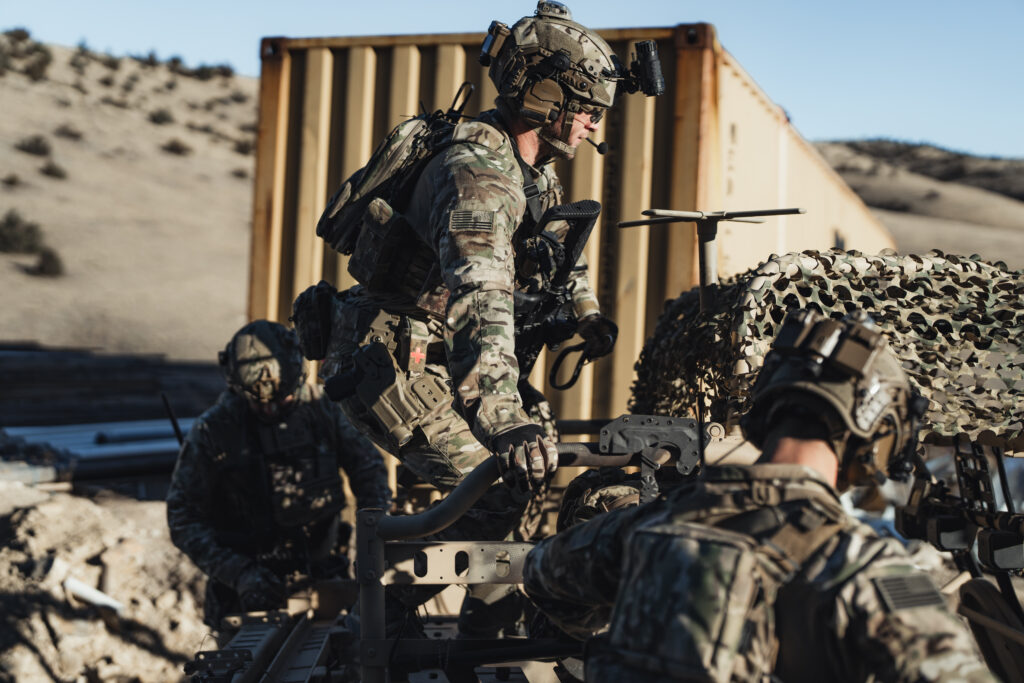
OEM partnering exemplar
Having mentioned Galvion’s Viper helmet earlier, it is worth noting that this had previously been chosen, at the end of 2020, as the new helmet – Helm SpezKr schwer – for the German Special Forces, with Rheinmetall Soldier Electronics, the in-country contracting entity manufacturing the helmet, as Galvion’s OEM partner. The framework contract will have delivered some 20,000 helmet systems by the time it concludes later in 2025, although a two-year contract-extension option is possible.
Beyond Rheinmetall’s OEM partnering, Galvion has relationships and facilities to meet the likes of the NSPA NATO member requirements, that include the establishment of a new European Caiman helmet system production facility in Gdansk, Poland in September 2023, now fully operational, and another OEM production partnership forged the same year and similar to the Rheinmetall arrangement, but this time with UK body-armour specialist, NP Aerospace. This partnership is now helping meet the needs of European NATO members with Caiman helmet systems, as well as Galvion’s Cobra Plus helmets for the UK’s Virtus programme.
The partnering choice of NP Aerospace makes sense, considering it already designs, tests, and makes its own high-performance ballistic helmet shells using advanced composites, and works closely with the global helmet OEM community; its Ontario, Canada facility is also a relative stone’s throw from Galvion’s HQ on the New Hampshire coast of the US. NP Aerospace, which made the first Kevlar composite helmet for the British Army as far back as 1979, has recently introduced a seamless helmet shell design some 25% lighter than previous shells, without, it says, losing any ballistic performance, and at the same time increasing manufacturing efficiency and capacity as a result of the helmet shell’s ergonomic properties. NP Aerospace has its own ISO 17025 UKAS-accredited laboratory and ballistic firing range on site, where it tests its helmet shells and ensures international ballistic performance standards, such as NIJ requirements, are met.
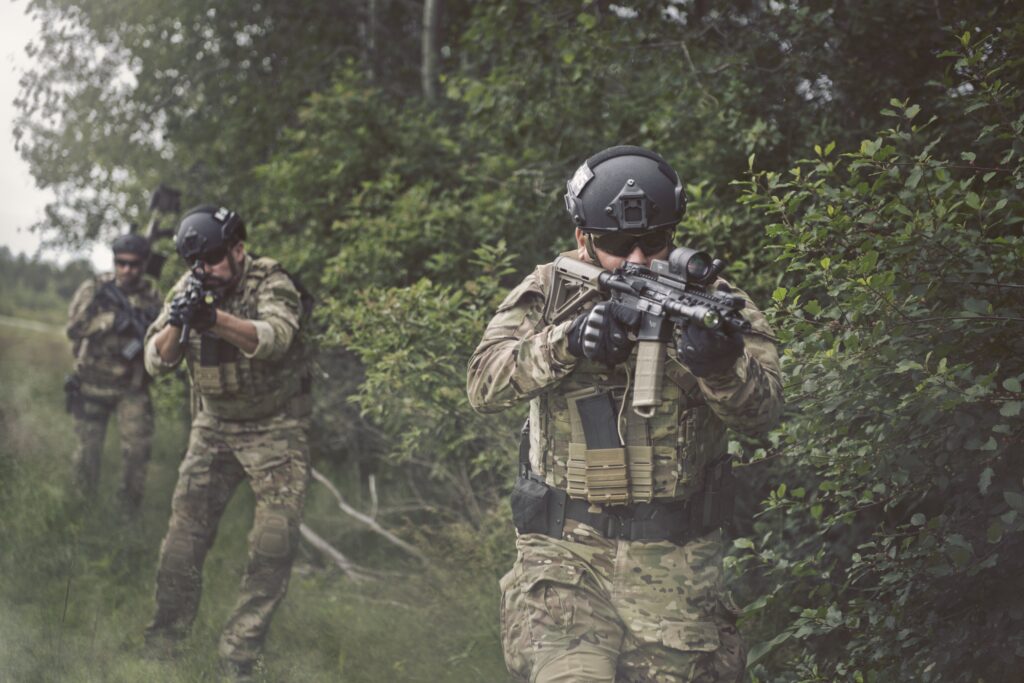
NP Aerospace’s experience and manufacturing processes for its own products, coupled with its support for Galvion, merely highlight how OEM partnerships in the helmet-manufacturing ecosystem underpin the production and supply of some of the latest helmets for NATO customers and beyond.
Tim Guest
Author: Tim Guest is a long-time freelance defence journalist, UK Correspondent for ESD, and a former officer in the British Armed Forces.


